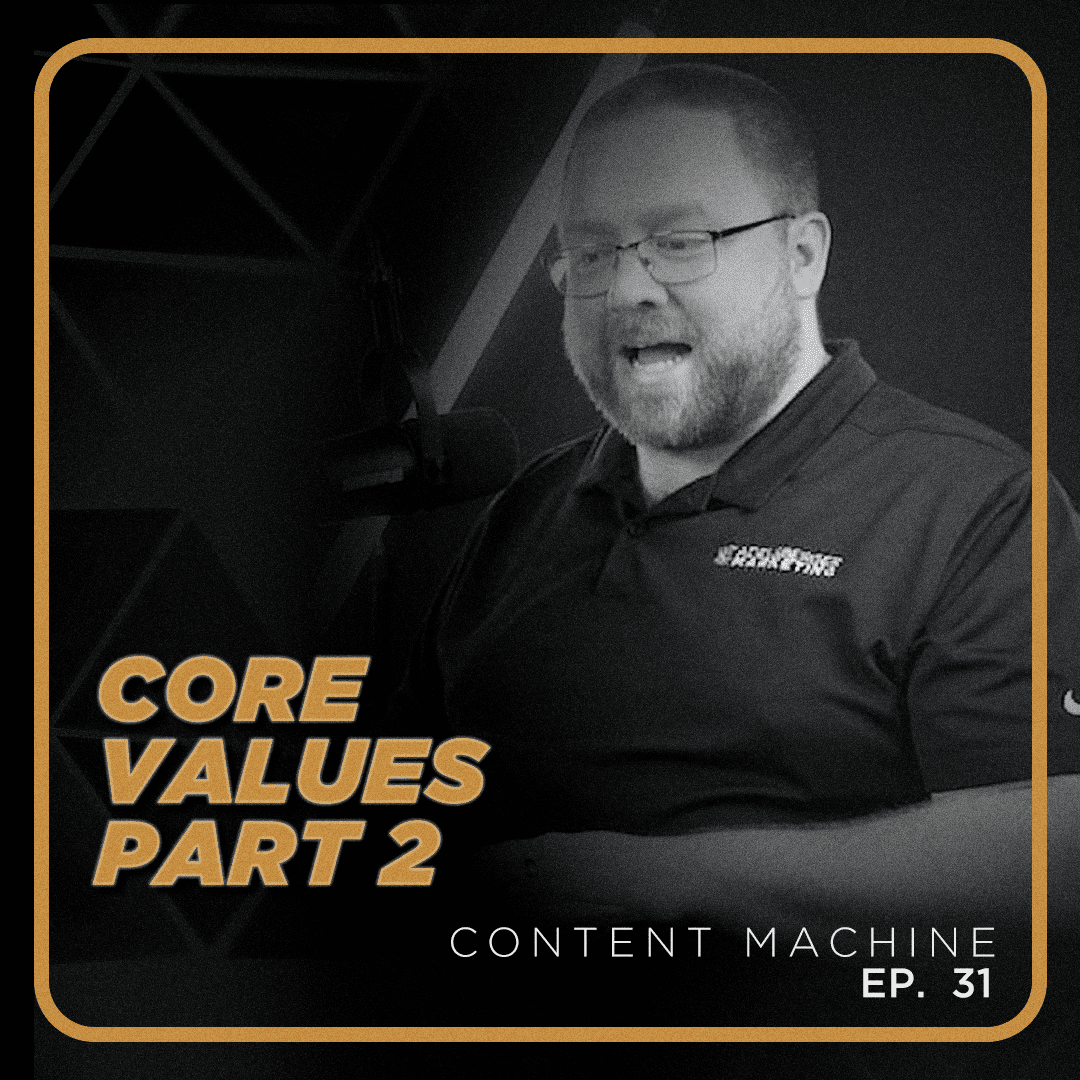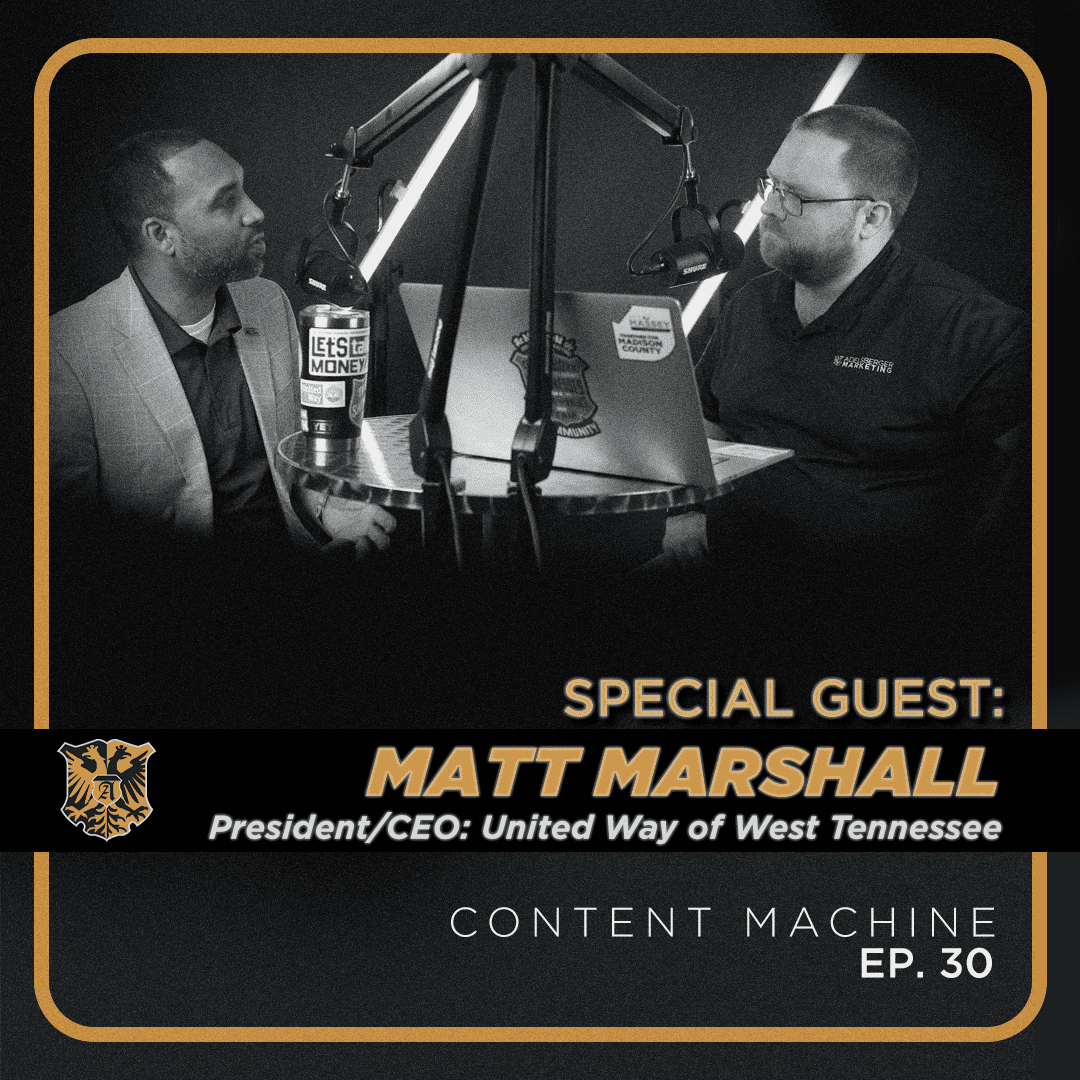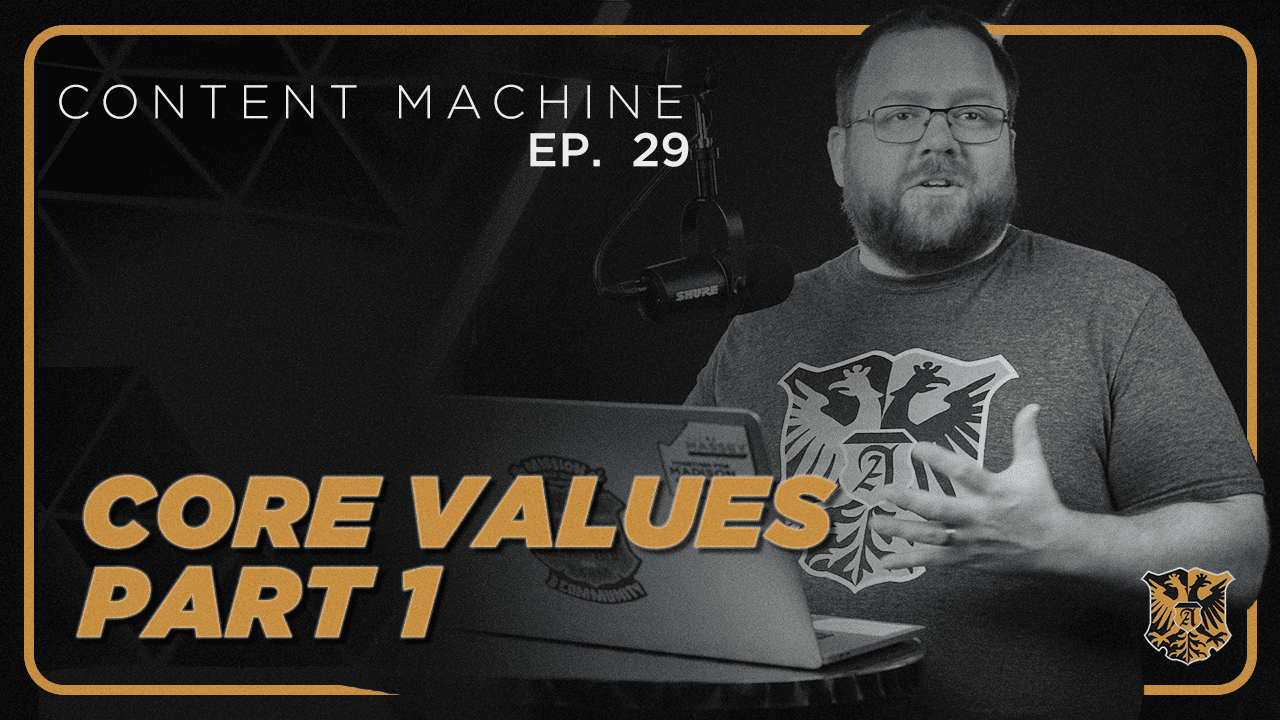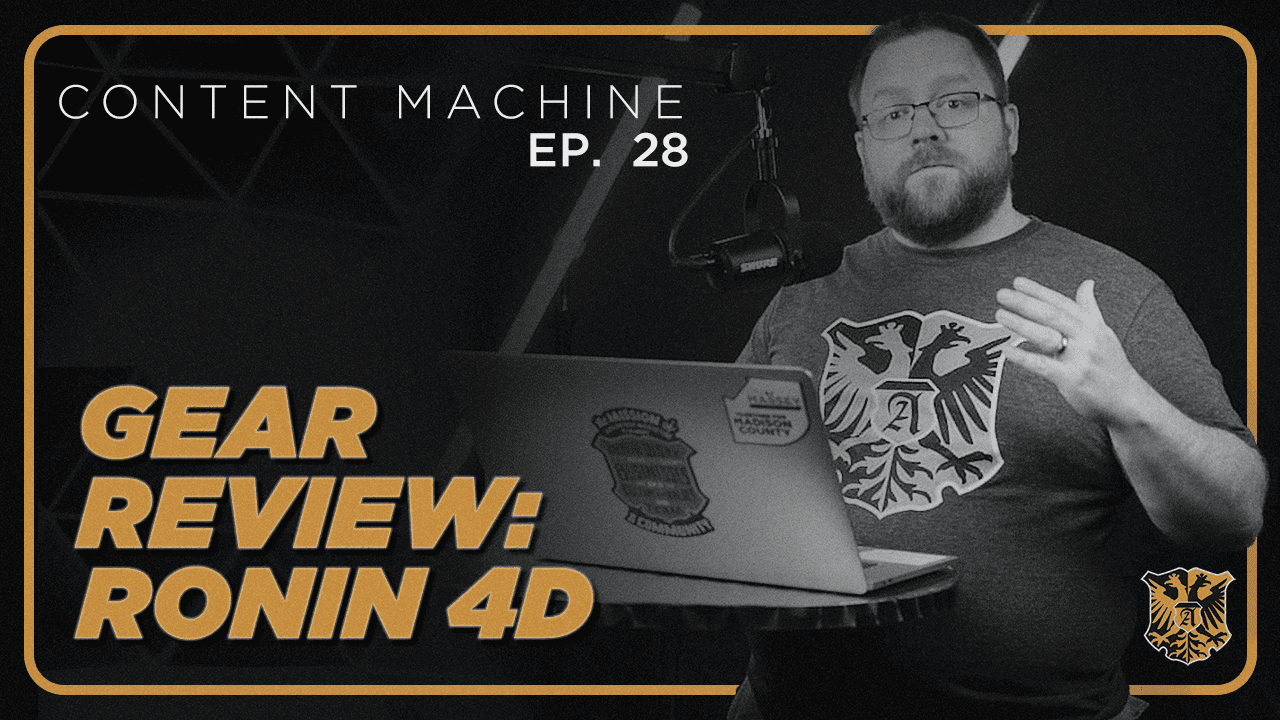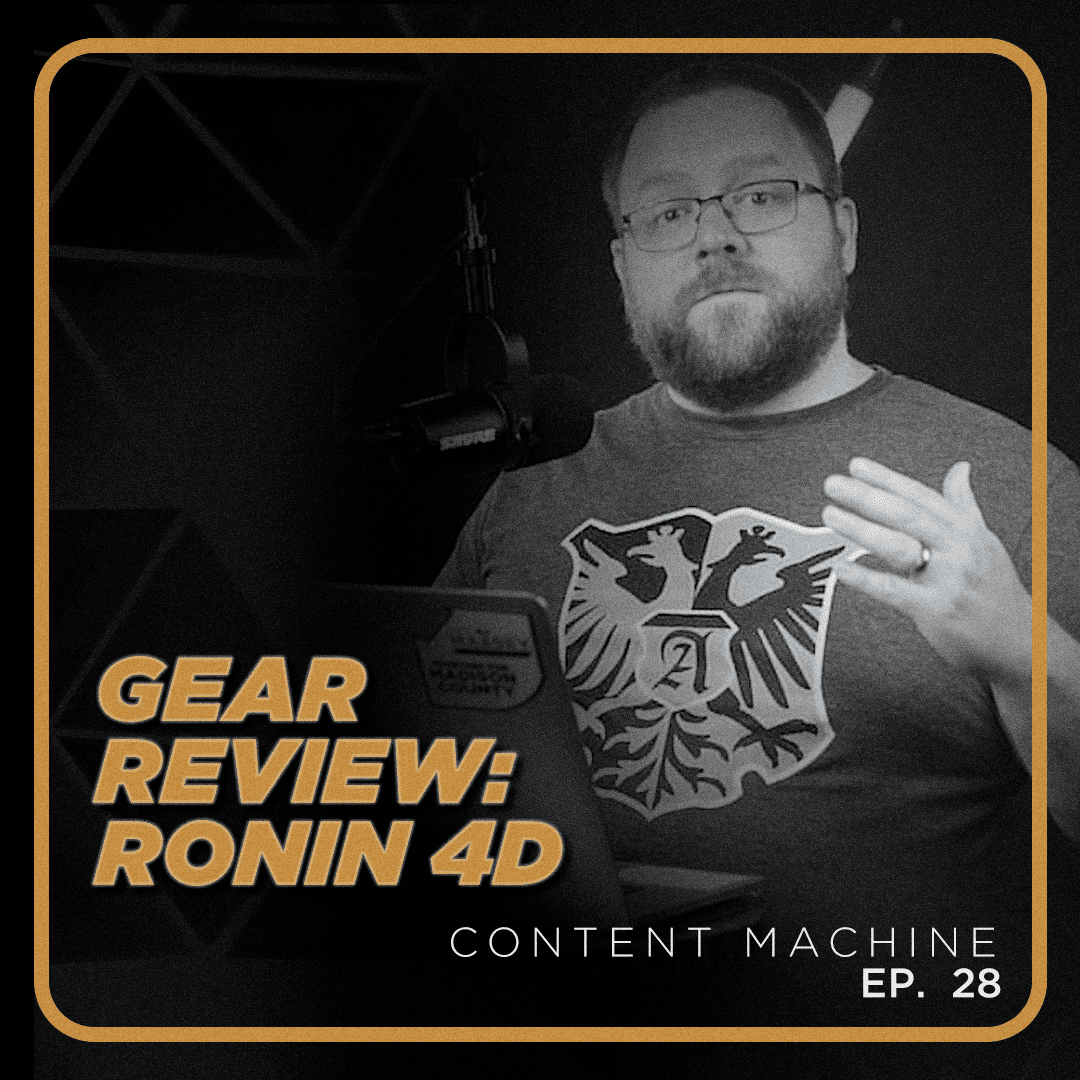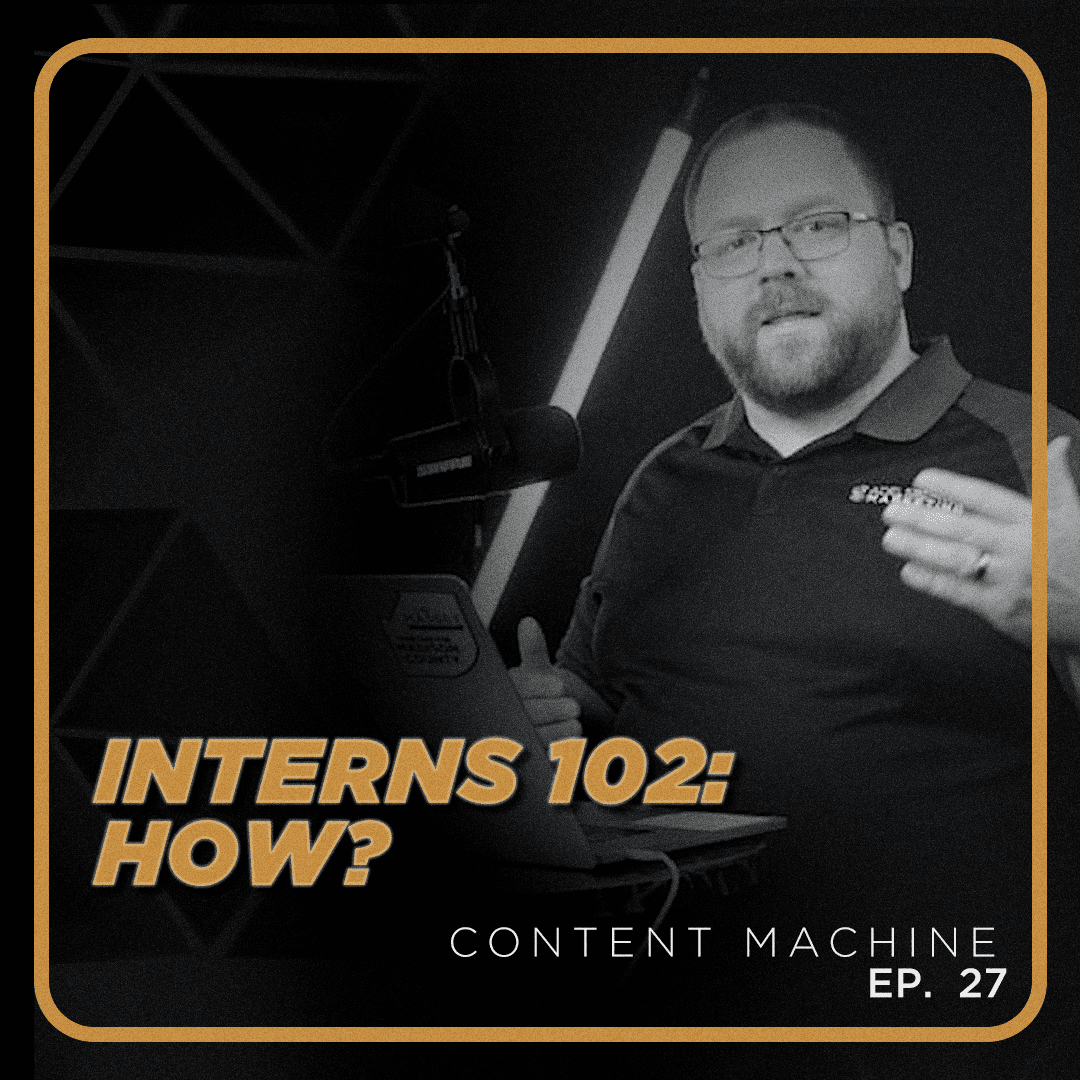Welcome to the Content Machine Podcast. This week, we’re joined by Matt Marshall, who’s a friend and local Jacksonian, who is in charge of the United Way here. But, Matt, why don’t you start by tell them just a little bit about yourself?
Yeah, absolutely. I’m married to Rachel, we have three kids, Arianna, Enora, and Elias, so two girls and a boy. I’m also a pastor at the Historic First Baptist Church in downtown Jackson. And yeah, long time member of the Jackson community for as long as I can remember and then some. Kevin, I know you’ve heard me tell this story before, but I’m actually a fifth generation Jacksonian and a seventh generation West Tennessean. Actually, just got to attend a family reunion, not this past weekend, the weekend before last, for the fourth. And I learned things I didn’t even know. And I thought I had dug through a lot of our family history quite a bit. And so, I found out that I was related to even more people in Jackson than I realized. So yeah, there we go. But yeah, I’ve been at United Way for about three and a half years and loving every moment of it.
So professionally, how do you get to the United Way from being a Jacksonian?
So, I’m born and raised here, went to school here, graduated from JCM back in 2002. And then I went to Union, so we share that in common for sure. I went to Union and I originally went to play soccer. So, I was on the soccer team my freshman year. And I did travel a bit growing up. So, I always felt as though I would go to school somewhere else. And so, I did actually, after my freshman year, transfer out and went out to Arizona and lived in Arizona for a couple of years. My wife and I were actually just looking at the apartment complex on Google Maps that I stayed in just this weekend, oddly enough. But went and lived there for a couple of years and then came back and finished at Union and got a job at Union right after. I ended up working at Union for eight years. I started out in admissions, recruiting students, and I did that for three years. Then for two years, I worked in the Vocatio Center where I helped students who were getting ready actually to graduate on the other side of things with building the resume and interviewing techniques and MBTI and all that stuff. I had a lot of fun with that. Then my last three years, I worked in university ministries. I got to lead go trips, but also work with Chapel and a number of other things. It was towards the last couple of years that I was at Union that I knew that I wanted to do something different.
When I first got back to Jackson from Arizona, I actually took two years off of school and worked in the public school system as a special needs assistant teacher. I had worked at elementary school at Thelma Barker. I really, really loved that and working with kids. And so those last two years, I was feeling like a pull back to that. I wasn’t exactly sure what that would look like. I ended up being contacted by Donna Agnew, who was the founder of Hands Up Preschool and she was getting ready to transition. And she had founded and run the school for five years. And so, they were looking for her replacement. I didn’t really know hardly anything about that process. But I knew about Hands Up. I’d heard about them before because one of the other things I did in university ministries was coordinate our campus and community day. I interacted with all the nonprofit leaders through that. One thing led to another. Lord opened the door for me to take over at Hands Up. I love that. Got to even – that first year, my own kid, Elias, that was his year for PreK, and so he went to the school with me, which was cool to be able to go to school every day and see one of your kids at work. Anyway, I ran Hands Up for two and a half years. When I had taken over the program, one of the things they had really tried to figure out was how to make the program more sustainable. And that’s a struggle in early education as a whole and in childcare historically. And so, I began to work with my staff there and my team as well as with the board. And together we came up with what we felt like was a good model to help get the institution to that point of being a lot more financially stable. And so, over the course of that two and a half years, our revenue grew by about 240%. And what happened by end of that second year of being there, so Scott Conger was the President of United Way at the time. And so, his very last thing that he did as the President of United Way was to host the celebration breakfast that they have annually. And at that celebration breakfast, they announced the nonprofit agency director of the year. And so, Hands Up was a United Way partner agency. And so, they selected me, which was a big surprise. I totally came out of the blue. And so that was the last thing that Scott did as the President of United Way. Then on Tuesday, as he was just starting out as the mayor, he called me and he said,
“Hey, the board was really impressed and they would just want to invite you to consider applying for the president position.”
I won’t go into that whole long story, but while he did extend that invitation to me, it was not a foregone conclusion at all. If I remember correctly, found out later they had over 80 applications and they flew four people into Jackson to come in for interviews from across the United States. And it was a whole process. But again, the Lord opened the door and so I was able to become the next president of United Way. And so probably a whole lot more I could share, but I’m going to try to keep it to that. And it’s been by the Grace of God.
When was that? When did you start?
October 2019.
2019. So how is the United Way… You want to give us a pitch of what it is traditionally known as, and then talk to us about where it’s involving?
Yeah, sure. So, when I first came to United Way in October of 2019, again, I mentioned I’ve been at a partner agency in United Way. Union had always been big donors. They ran a United Way campaign for a long, long time as well. So, I was familiar with United Way. I always tell people, and it’s funny because I see this NFL thing right here hanging on you guys’ door. So, the NFL is one of United Way’s biggest supporters historically. So, I always tell people, the thing I remember most about United Way growing up was the NFL commercials that they would do with them with quarterbacks and stuff.
And the Saturday Night Live Peyton Manning commercial.
Yeah, for sure. Legendary. Yeah, for sure. And so that was what I remember most about them. But I probably was like a lot of other people that if you asked me, what is it that United Way does? I would struggle a little bit more to understand, to be able to articulate that for you. But remember, again, I’ve been from a partner agency, so I even understood a bit more about that. But when we talk about that, and for the listeners, we go, well, what does United Way do?
So historically, I always love to tell this story here. Everybody’s played Monopoly, generally speaking. And there are typically two cards that you can draw on a Monopoly board – and the one that you really want to draw, so you have chance or you have the community chest. Chance, you never know what you’re going to get. You could win money or you could go to jail, right? Well, the card that you always want to draw in Monopoly is community chest, because all you get from community chest is just money. And so that is actually United Way’s old name. We were originally the community chest.
And so now that being said, it drives me crazy that United Way never talked to Milton Bradley or Parker or whoever owns Monopoly and said, “No, just change the name. Just update the name.”
But anyway, we historically are the community chest. So, what that means is that for decades, people and communities all across the country, all around the world, have contributed or donated into a common community chest, a bucket, and those funds then get dispersed out into the community to other nonprofits. So simple way I’ve always explained it is we’re the nonprofit of nonprofits. And so that’s what we’ve done for decades and for generations at this point. So, we go into companies and we do campaigns where we ask each employee to give a little bit out of their paycheck that goes into that community bucket. And then volunteers in each county, in our case, we serve 15 counties, each one of those counties, a volunteer group, then makes decisions on who gets funded and how much. So that’s who United Way has been forever. But I recognized, literally in the first week, that as great as that is a process and a role to be able to play and to have the privilege and honor of having the trust of the community to do that, which we don’t take for granted. I also felt like because of my background and where I was coming from, that there probably were some other things that we could address as well. And so, we started to try to identify what those things were, but for all intents and purposes, we’re still that United way. We just added some things.
But you’ve added things that are a little bit of a different vein, right?
Yeah, for sure.
Because you’ve moved from being the nonprofit of nonprofits to, you’re also doing some direct service now. So, talk about what that change is like and why that change has happened.
I hinted at it a moment ago that I really felt as though when I came to United Way, again, being a son of this community and having been raised in this community and spent almost all my life here, that when we talk about the pillars of United Way, so health, education and financial stability primarily, when we talk about those, what we’ve done historically is we have partnered with other organizations that are doing service in health, education and financial stability, and we have funneled money their way to execute those programs. And we still do that today. But because of my background, and I always say this, I’m biased. My background is education, so I’m biased, first and foremost. But I also think that there’s a reason for that bias because I tell people, well, if you want really a healthy community, you want an educated community. And if you want a financially stable community, you want an educated community.
Yeah, chicken or egg situation.
Right. So, for me, education always really stood out among our pillars. But because that was my background, I also knew from my experiences that that’s where there was still a lot of need and a lot of opportunity to invest. And so, I immediately began to have conversations with our board and with our staff and with other leaders about needs in the arena of education. And so, what has transpired over the last three and a half years is us trying to better understand what those needs are in West Tennessee, and how can we step in to fill some those gaps. So, I want to be really clear, the thing I didn’t want to do was start working in an area where there were already people doing work, particularly nonprofits. We didn’t want to do that. One of the reasons why United Way has been as focused on those community chest type of initiatives is because we don’t want to duplicate efforts. We don’t want other nonprofits to duplicate efforts.
That would make any sense. That’s wasteful.
That’s right, completely. And so, we want to stretch every dollar to go as far as it absolutely can. And so, I didn’t want to get in that business of saying, well, I don’t care what anybody else is doing. We’re going to do this. Not at all. We want to better understand what the needs were and where those gaps were and then try to meet people there. And so, what that has looked like is, to your point, us for really the first time for our United Way, getting involved in more direct services. So historically, our programs look like the Vita program, which is a partnership with Cadence Bank locally, where we help prepare taxes. We offer it as a free service to citizens in our community during tax season. So, we’ve run that program. We have Christmas partners, which again, going back to the duplication thing, that was set up to work across various different nonprofits to serve people in our community during the Christmas season to make sure kids had something underneath their tree without there being duplication. And so, we helped run and facilitate that program. Then we had our single care, which is a prescription program, which really all we really did was market it. It wasn’t really a program per se of ours. And then we had disaster and emergency assistance as needed. And those were for the most part, the programs we were running. And so, again, where the shift has taken place is, okay, well, where were there still gaps? One of the biggest things, there were two areas in particular that we saw huge need for investment.
One, the field I came out of, childcare. And unfortunately, it was already tough. That field was tough when I was in it. And there was already not enough access and not enough support for families in our community of all different types. But then the pandemic hit, and we had childcare centers all around the region closing their doors and not being able to make it on the other side of that. And so, it was already an issue before and now it’s exacerbated. And so back in 2001, when the Department of Human Services first started tracking the number of licensed childcare facilities across the state, there were about 81 to 83 childcare facilities at that time in West Tennessee. And licensed childcare facilities, I should say. Not in West Tennessee, in Madison County. In Madison County, there were 81. Now, there’s somewhere underneath 30. And so, this is a need. This is a need. This is a huge issue. And so that was one of the first programs or one of the first things we started working on. So, I hired Olivia Abernathy. We partnered with Tennessee’s for Quality Early Education, and we started doing research. Again, we didn’t just dive in and just say, oh, we’re going to do something here. We want to even more so better understand the need.
So that was one area. And then the other really big one was the Financial Empowerment Center. The other big need that we saw was just around, again, the financial instability of our communities. So, shout out to the mayor. Again, Mayor Conger, when he was in my role, had already begun to look at this and analyze it. And we had produced the ALICE report and the data about needs in our communities across West Tennessee. And as he became Mayor, he started an anti-poverty task force, of which I had the privilege to chair initially and work alongside Lauren Kirk from his office. And we started diving into that and saw the need for a financial empowerment center here that would offer free financial counseling services. And so that was another area where we really pushed heavily. And so, we were able to get that launched in March of 2022. And we have a shared services platform now to begin to work on the childcare issue. And then both of those things led to a bunch of other programs.
Thank you for listening to this episode of the Content Machine Podcast. This was part one of a two-part episode with Matt Marshall. Stay tuned for the second half.


